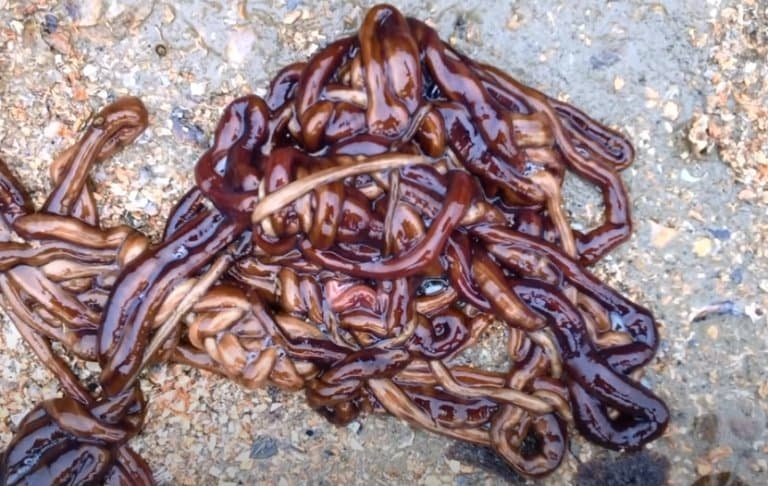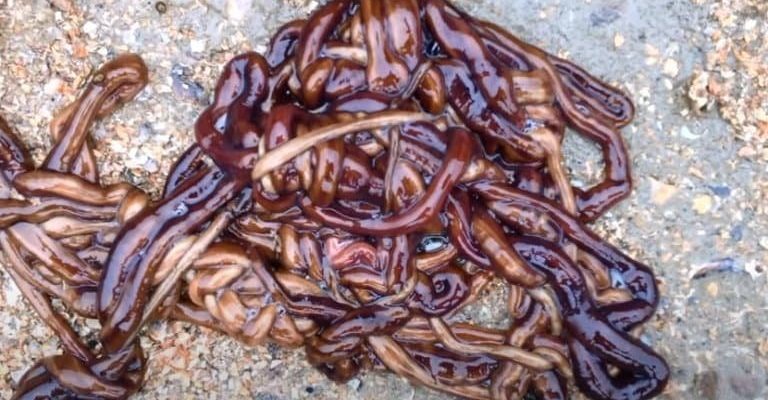
Bootlace worms, scientifically known as *Lineus longissimus*, are impressive not just for their length but for how they adapt to their environment. Seasonal changes play a significant role in their habitat choices, influencing where they live, feed, and even reproduce. In this article, we’ll explore how bootlace worms thrive in different habitats across various seasons, while considering factors like temperature, food availability, and water conditions. You might be surprised at how dynamic and responsive these creatures can be!
Spring: A Season of Awakening
As spring rolls in, something magical happens in the natural world. Temperatures start to rise, and life bursts forth from its winter slumber. For bootlace worms, this time of year is crucial. They begin to emerge from the sediment where they’ve been burrowed during colder months. The increasing water temperatures and the influx of nutrients from melting ice and runoff create ideal conditions for bootlace worms to thrive.
During spring, these worms prefer **shallower coastal waters** where sunlight penetrates, promoting the growth of algae and other microorganisms. These serve as a food source for the worms. You’ll often find them nestled in sandy or muddy substrates, where they can quickly dig in and hide from predators. This seasonal shift is like a buffet opening up for bootlace worms, offering them plentiful food options and a chance to reproduce.
Feeding Habits in Spring
Bootlace worms are *predators*, so they start feeding on small marine organisms as spring warms up. They’ll often venture out into the water column as newfound mobility allows them to chase after prey. This shift not only helps them gather energy for reproduction but also stabilizes their populations before summer hits.
Summer: A Time for Growth
When summer arrives, bootlace worms are in full swing. The warm waters are perfect for their growth, and you might see them extending into **deeper waters** compared to spring. During this season, bootlace worms can reach their maximum sizes, some even stretching over 30 meters long! That’s right; they’re among the longest animals on Earth.
In summer, you’ll find bootlace worms nestled in both **intertidal zones** and deeper marine habitats. The abundance of food, such as small fish and crustaceans, means they can thrive and grow at an astonishing rate. Summer isn’t just about survival; it’s a time of thriving and expanding their territories.
Breeding Season
Summer is also the prime breeding season for bootlace worms. They can reproduce through fragmentation, meaning when they get injured or break apart, those pieces can grow into new worms! This strategy helps increase their population in favorable conditions. So, while they’re busy becoming longer, they’re also ensuring their lineage continues.
Autumn: Preparing for Change
As the leaves turn and the air cools, bootlace worms start to prepare for the upcoming winter months. Autumn brings a shift in their habitat preferences; they begin to burrow deeper into the sediment to avoid the cooler temperatures and harsher conditions that winter will bring. This shift allows them to conserve energy and stay safe from predators.
The nutrient levels in the water can begin to fluctuate as algal blooms decline, leading these worms to seek out more stable conditions in the sea floor’s depth. This might mean they tend to migrate back towards areas rich in organic matter where they can find enough food to get through the winter.
Food Availability
For bootlace worms, autumn is a time of transition but also a time for eating. They shift their diets based on what’s available, focusing on scavenging organic debris rather than actively hunting. This behavior ensures they have the energy to survive the winter months when food becomes scarce.
Winter: Survival Mode
Winter poses a big challenge for bootlace worms. As temperatures drop, they retreat to the depths of the ocean or into protective burrows. This is their survival strategy—staying out of the cold and waiting for warmer months to return. They can even enter a state similar to hibernation, where their metabolic rates drop significantly, conserving energy until food becomes more available again.
Interestingly, winter is also a time of relative stillness. The lack of activity means they’re not as visible, but they’re still very much present in their habitats. The mud and sand provide insulation against freezing temperatures, creating a cozy environment where the worms can wait it out.
Impact on Ecosystem
Even in winter, bootlace worms play an essential role in their ecosystems. Their burrowing helps aerate the sediment, promoting a healthy environment for other marine life. Plus, they decompose organic matter, recycling nutrients back into the ecosystem. It’s like they’re little caretakers of the sea floor, quietly working away while the rest of us are bundled up indoors.
Key Takeaways on Habitat Preferences
Understanding **bootlace worm habitat preferences** by season gives us a clear picture of how these creatures adapt to their environment. Here’s a quick summary of what we’ve covered:
- Spring: Emerges with rising temperatures, finds food in shallower waters.
- Summer: Thrives and reproduces in deeper waters with plenty of food.
- Autumn: Burrows deeper to prepare for winter, adjusting diets for scavenging.
- Winter: Enters a phase of reduced activity, conserving energy for survival.
Each season presents its own challenges and opportunities. Bootlace worms are resilient, adapting their habitats and behaviors in response to the changing environment. If you ever get a chance to observe them in the wild, think about everything they’re experiencing. It’s a complex dance of survival that highlights the importance of seasonal changes in marine ecosystems.
In conclusion, bootlace worms are not just fascinating creatures; they’re an essential part of our marine environments. By understanding their habitat preferences through the seasons, we can appreciate their resilience and adaptability even more. Whether you’re a budding marine biologist or simply someone intrigued by the wonders of nature, knowing how bootlace worms navigate their world adds to the rich tapestry of life beneath the waves.

